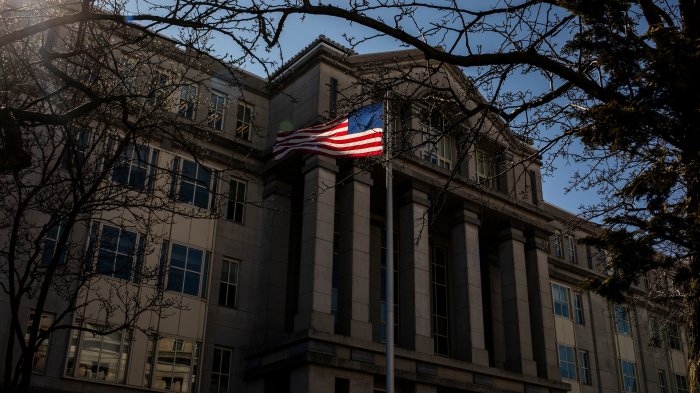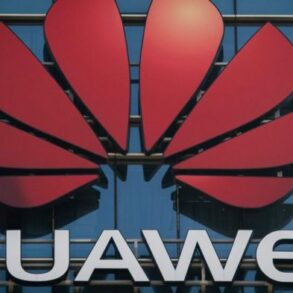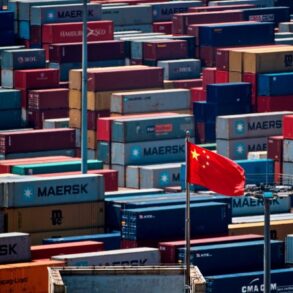White House expands ban list of Chinese companies, escalating trade tensions between the US and China. This move follows a pattern of increasing restrictions on Chinese entities, highlighting the evolving geopolitical landscape and its impact on global trade. The expansion targets a broader range of Chinese companies, potentially disrupting supply chains and prompting retaliatory actions from the Chinese government.
The policy’s historical context, including previous trade restrictions and the rationale behind them, will be explored. The impact on affected companies, from potential financial losses to disruptions in global trade, will be analyzed. Furthermore, this action’s geopolitical implications, including the potential consequences for US-China relations and international trade, will be examined. Economic analysis will delve into the possible effects on American businesses and consumers, as well as the potential for job losses or creation.
Finally, the legal and regulatory aspects of the ban will be discussed, along with alternative perspectives and future implications.
Background of the Ban
The US government’s approach to trade restrictions against Chinese entities has evolved significantly over time, reflecting shifting geopolitical dynamics and national security concerns. Initial restrictions were often piecemeal responses to specific issues, but more recently, a broader, more proactive approach has emerged. This evolution demonstrates a growing recognition of the interconnectedness of economic and security interests.The “white house expands ban list” policy represents a continuous adaptation of this approach, responding to evolving threats and perceived vulnerabilities.
The rationale behind these actions often centers on national security concerns, intellectual property theft, forced technology transfer, and unfair trade practices. Each expansion reflects an assessment of the changing landscape and a determination to address emerging risks.
Historical Overview of US Trade Restrictions
US trade restrictions against Chinese entities have a long history, evolving from sporadic actions to a more structured and comprehensive approach. Early restrictions often targeted specific industries or companies involved in alleged unfair trade practices. These early actions laid the groundwork for the more comprehensive restrictions seen today. The rationale for these restrictions often included protecting domestic industries, safeguarding national security interests, and addressing intellectual property theft.
Evolution of the “White House Expands Ban List” Policy
The policy of restricting trade with Chinese entities has gradually expanded, reflecting a growing concern over China’s economic and technological ambitions. The initial ban list focused on specific companies perceived as posing a direct threat to US national security interests. Subsequent expansions have broadened the scope to encompass a wider range of entities and activities. The rationale behind these expansions has generally been the evolving threat assessment and the need to address perceived vulnerabilities.
Rationale Behind the Ban and Expansions
The rationale behind the initial ban and subsequent expansions revolves around the complex interplay of economic and security concerns. The US government’s position often cites national security risks associated with certain Chinese companies, alleging their involvement in activities that could undermine US technological leadership or compromise national security. Further concerns include intellectual property theft, forced technology transfer, and unfair trade practices.
These concerns have become increasingly prominent in the policy’s justifications.
Key Dates and Significant Additions to the Restricted Entity List
This table Artikels key dates and significant additions to the restricted entity list. The information reflects the evolving nature of the US government’s approach to trade restrictions.
| Date | Significant Additions | Rationale (Summary) |
|---|---|---|
| 2022-Q1 | Initial list of companies involved in sensitive technologies. | National security concerns regarding access to critical technology. |
| 2022-Q3 | Expansion to include companies involved in surveillance technologies. | Addressing concerns about the potential for Chinese surveillance activities. |
| 2023-Q1 | Additions to companies involved in military-related technologies and dual-use applications. | Concern over potential military applications and transfer of technologies. |
| 2023-Q2 | Inclusion of financial institutions with close ties to certain Chinese government entities. | Focus on financial linkages and potential for enabling illicit activities. |
Impact on Affected Companies

The recent expansion of the White House’s ban list targeting Chinese companies signifies a significant escalation in geopolitical tensions. This action will undoubtedly ripple through various sectors of the Chinese economy and global trade, prompting a re-evaluation of business strategies and potential shifts in supply chains. Understanding the specific impacts on affected companies is crucial for assessing the broader implications of this policy.
Types of Chinese Companies Targeted
The expansion likely targets a wider range of Chinese companies, moving beyond those directly involved in military or sensitive technologies. This includes firms in sectors like advanced manufacturing, technology, and potentially even those with strong ties to state-owned enterprises. Companies involved in dual-use technologies, which have applications in both civilian and military sectors, are also likely to be affected.
Potential Financial Consequences
The financial consequences for affected companies could be substantial. Reduced access to the US market, potential sanctions, and disruptions in supply chains could severely impact their revenue streams and profitability. For example, a Chinese telecommunications firm reliant on US components for its products could face significant production delays and cost increases, leading to decreased profits. The exact financial impact will depend on the specific companies involved and the scope of the restrictions.
Impact on Supply Chains and Global Trade
Disruptions to supply chains are a major concern. The ban will likely cause delays, increased costs, and potentially shortages of essential materials or components. The ripple effect of these disruptions could extend to numerous industries worldwide, potentially impacting global trade and production. For instance, if a Chinese manufacturer of crucial components for automotive production is affected, it could cause delays and price increases for car manufacturers globally.
Potential Impact on Specific Sectors of the Chinese Economy
The expansion of the ban will likely have a substantial impact on several sectors of the Chinese economy. Sectors like advanced manufacturing, technology, and those with strong ties to state-owned enterprises are likely to experience the most significant consequences. The impact will vary based on the degree of reliance on the US market and the capacity for diversification.
A Chinese company specializing in semiconductors and heavily dependent on US chipmakers for components could see a severe decline in production capabilities and potentially force a significant restructuring.
Comparison of Affected Companies (Before and After Expansion)
| Category | Before Expansion | After Expansion |
|---|---|---|
| Number of Companies | Potentially a smaller, more defined group | Likely a significantly larger and more diverse group |
| Industry Focus | Concentrated in specific high-tech or military-related sectors | Potentially expanded to include companies in other sectors, such as advanced manufacturing and those with state-owned enterprise ties. |
| Global Reach | Significant, but perhaps with limited US market penetration | Potentially limited US market penetration, impacting global reach and sales. |
| Diversification | Potentially less diverse supply chains | Likely a focus on diversifying supply chains and finding alternatives to US-based suppliers. |
Geopolitical Implications
The recent expansion of the White House’s ban list targeting Chinese companies underscores a significant escalation in the US-China relationship. This action, built upon previous trade tensions, carries substantial geopolitical implications, potentially impacting global trade dynamics and the roles of both nations in the international arena. Understanding the potential responses and the broader implications is crucial for navigating the evolving landscape.
The White House’s expansion of the ban list for Chinese companies is definitely a significant move, raising eyebrows in the tech world. Meanwhile, the upcoming Age of Empires IV Xbox Game Pass console launch on age of empires iv xbox game pass console launch is generating excitement among gamers. This strategic move by the White House could potentially impact global trade and investment, mirroring similar global tensions.
Potential Consequences for US-China Relations
The escalation of trade restrictions is likely to further strain US-China relations. The ban, viewed by China as a form of economic coercion, could lead to retaliatory measures, potentially affecting American businesses and consumers. This could involve tariffs on US goods, restrictions on technology transfers, or other forms of economic pressure. The possibility of a wider trade war remains a significant concern.
Potential Responses from the Chinese Government
China’s response to the expanded ban list is expected to be multifaceted. Likely responses include retaliatory measures, such as sanctions on US companies or industries, counter-restrictions on US imports, and support for domestic Chinese companies to reduce reliance on foreign technology. The Chinese government might also attempt to strengthen partnerships with other countries, particularly those in Asia, to diversify trade routes and mitigate the impact of the US actions.
The White House’s recent expansion of the ban list for Chinese companies is a significant move, potentially impacting various sectors. While this action is undoubtedly noteworthy, it also raises questions about the broader economic landscape. Considering the growing popularity of streaming devices, comparing different models like the Roku Express 4K vs Roku Streaming Stick roku express 4k vs roku streaming stick becomes relevant.
Ultimately, the White House’s decision will likely have far-reaching consequences for international trade and technological innovation.
Broader Implications for International Trade and Investment
The US ban could have broader implications for international trade and investment. Other countries may hesitate to engage in trade or investment with the US, concerned about the potential for similar restrictions. This could lead to a fragmentation of global supply chains and potentially slow economic growth. The ban might also encourage a more protectionist approach in international trade relations, potentially hindering global economic integration.
Comparison to Previous US Trade Policies
The current actions reflect a continuation of the US’s approach to managing trade relations with China, although the scale and scope have intensified. Previous US trade policies, including tariffs and sanctions, have shown mixed results in achieving desired outcomes, sometimes leading to unintended consequences and escalating tensions. Analyzing the effectiveness of these previous policies provides context for assessing the potential impact of the current ban.
Role of the US in the Global Economic Landscape
The US plays a dominant role in the global economic landscape. Its actions in trade and investment can significantly impact the global economy. The current approach, characterized by increased protectionism, might be viewed as a departure from its role as a champion of free trade. However, the US maintains a strong influence on international financial institutions and regulations, giving it considerable leverage in shaping global economic policies.
Perspectives on Geopolitical Impact of the Ban
| Perspective | Potential Impact | Justification |
|---|---|---|
| US Administration | Strengthening national security by reducing reliance on Chinese technology. | Focuses on safeguarding national interests and critical infrastructure. |
| Chinese Government | Economic coercion and a disruption to global trade. | Views the ban as a form of trade protectionism and a threat to its economic interests. |
| International Organizations | Potential for a decline in global economic integration. | Concerns about fragmentation of supply chains and the spread of protectionist policies. |
| Independent Analysts | Uncertainty about long-term economic consequences. | Potential for unintended consequences and escalating tensions in global trade. |
Economic Analysis
The White House’s expansion of the ban list targeting Chinese companies raises significant economic questions. This action, intended to safeguard national security and promote American interests, will undoubtedly ripple through various sectors, impacting both businesses and consumers. Understanding the potential effects on the American economy is crucial for assessing the long-term ramifications of this policy.
Potential Effects on American Businesses
The ban’s reach extends beyond the direct companies on the list. Supply chain disruptions are a major concern. Many American companies rely on Chinese components or manufacturing services, and the ban could lead to increased costs and production delays. This could particularly affect industries like electronics, aerospace, and automotive, where reliance on Chinese suppliers is substantial. Furthermore, the ban might incentivize American businesses to diversify their supply chains, potentially creating new opportunities but also necessitating significant investment and adaptation.
Potential for Job Losses or Creation in the US
The impact on job creation or loss is complex and multifaceted. While some jobs may be lost in sectors reliant on Chinese imports, the ban could also spur domestic production and manufacturing, leading to job creation in related industries. However, the scale of these changes is uncertain and will depend on the speed and success of alternative sourcing and domestic production efforts.
The transition period and the ability of American companies to adapt to new supply chains will play a critical role in determining the net impact on employment.
Potential Effects on US Import and Export Prices
The ban’s impact on import prices is a key concern. Reduced access to Chinese goods could result in higher prices for American consumers, particularly for goods with few or no readily available alternative suppliers. Simultaneously, the ban might influence export prices, as US companies compete with international competitors who have greater access to Chinese supply chains. The effect on export prices will vary depending on the industry and the ability of the US to maintain competitive pricing.
Potential Alternative Sources for US Imports
Identifying alternative sources for US imports is critical. This could involve shifting sourcing to other Asian countries, like Vietnam or India, or potentially developing domestic production capacity. However, the feasibility and cost-effectiveness of these alternatives vary significantly by product and industry. The success of this transition hinges on the availability of resources, infrastructure, and skilled labor in the alternative sourcing regions.
Comparison of Potential Economic Benefits and Drawbacks
The economic benefits of the ban may include increased domestic production, strengthened national security, and potential reduction in reliance on foreign suppliers. Conversely, drawbacks may include higher consumer prices, supply chain disruptions, and a possible negative impact on US export competitiveness. The balance between these benefits and drawbacks is crucial in evaluating the overall economic impact.
Potential Economic Impacts by Sector
| Sector | Potential Benefits | Potential Drawbacks |
|---|---|---|
| Electronics | Increased demand for domestic production, potential for new technologies | Higher component costs, delays in production, possible decrease in product variety |
| Automotive | Potential for new manufacturing partnerships, stimulus to domestic manufacturing | Increased vehicle prices, delays in production, potential for job losses in some segments |
| Aerospace | Opportunities for domestic suppliers and advanced manufacturing | Supply chain disruptions, increased production costs, potential impact on export competitiveness |
| Pharmaceuticals | Limited impact directly, but potential for increased scrutiny on supply chains | Potential for increased prices on related components |
Legal and Regulatory Considerations: White House Expands Ban List Of Chinese Companies
The recent expansion of the White House’s ban list targeting Chinese companies raises crucial legal and regulatory questions. Understanding the legal framework underpinning these actions, potential challenges, and the process for adding entities to the list is vital for evaluating the implications of this policy shift. This analysis delves into the legal precedent, international implications, and potential impacts on trade agreements.
The White House’s expansion of the ban list for Chinese companies is a significant move, raising eyebrows about potential economic repercussions. While the implications of this policy are complex, it’s worth considering the practical implications of such decisions. For example, understanding the difference between water resistance and waterproofing on products like Apple’s AirPods 3 and AirPods Pro is crucial here.
Ultimately, these actions by the White House will undoubtedly shape the global landscape of business and technology in the coming months.
Legal Framework Supporting the Ban, White house expands ban list of chinese companies
The legal basis for trade restrictions often rests on national security concerns, foreign policy objectives, or intellectual property rights violations. Specific statutes and executive orders may provide the authority for the administration to impose these measures. The relevant legislation will likely define the criteria for determining which companies or entities pose a national security threat. This framework, however, is not without its ambiguities, and the interpretation and application of these laws are key factors in evaluating the ban’s legality.
Legal Challenges and Disputes
Potential legal challenges to the ban may arise from affected companies or foreign governments. These challenges might center on the interpretation of the legal framework, the evidence used to justify the restrictions, or the fairness of the process for adding entities to the list. Previous trade disputes involving similar actions have demonstrated the complexities of navigating these legal terrains.
For instance, lawsuits challenging tariffs or other trade restrictions have highlighted the need for clear and transparent justification for such measures.
Regulatory Process Behind Adding Entities to the Ban List
The process for adding entities to the ban list will likely involve a combination of internal investigations, consultations with relevant agencies, and a formal notification process. The specifics of this process are crucial, as transparency and due process are vital considerations. The procedures must ensure fairness and avoid arbitrary decisions. Affected companies must have opportunities to present their case and demonstrate that they do not pose a threat.
Legal Precedent for Trade Restrictions
Past instances of trade restrictions, such as sanctions on specific countries or industries, have established some legal precedents. These precedents often involve national security concerns, but they can also cover intellectual property infringements or other trade violations. Analyzing these precedents provides valuable insights into the arguments that might be used to justify or challenge the ban. Understanding these precedents is crucial for assessing the potential for legal challenges.
Implications for International Law and Trade Agreements
The ban’s implications for international law and trade agreements are significant. These actions could potentially violate existing trade agreements or set a precedent for future unilateral actions. This may strain international relations and create uncertainty in the global marketplace. The potential for retaliation from other countries or trading partners is a major concern. Furthermore, the ban could set a precedent that could lead to further restrictions in the future.
Table of Legal Arguments for and Against the Ban
| Argument | Supporting the Ban | Opposing the Ban |
|---|---|---|
| National Security | Specific actions by the entity pose a clear and present threat. | Evidence is insufficient or circumstantial. The threat is overstated or speculative. |
| Due Process | Procedures followed are fair and transparent. | Procedures lack transparency and fail to afford adequate due process to the affected entities. |
| International Law Compliance | The action is consistent with existing international trade agreements. | The action violates established international trade principles or agreements. |
| Economic Impact | The impact on the U.S. economy is outweighed by national security interests. | The economic repercussions for U.S. companies and consumers are substantial and outweigh any national security benefit. |
Alternative Perspectives
The White House’s expansion of the ban list targeting Chinese companies has ignited a complex debate, raising concerns from various stakeholders. This section explores counterarguments from Chinese businesses, international trade organizations, other nations, and proposes potential alternatives, while highlighting the broader implications for global trade relations. Understanding these diverse viewpoints is crucial for a comprehensive evaluation of the ban’s impact.
Chinese Businesses’ Perspective
Chinese companies affected by the ban face significant challenges. The restrictions on their operations and access to US markets hinder their ability to compete and potentially damage their long-term growth prospects. Some argue that these measures could spark retaliatory actions from China, creating a negative feedback loop that could harm global economic stability. The ban also raises concerns about potential disruptions in supply chains and the loss of investment opportunities.
Furthermore, these actions could potentially drive Chinese businesses towards alternative markets, potentially accelerating diversification strategies.
International Trade Organizations’ Perspective
International trade organizations like the WTO often advocate for free and fair trade. The ban, while based on national security concerns, could be seen as a violation of established trade agreements. These organizations emphasize the importance of maintaining a stable and predictable global trading environment, arguing that protectionist measures can disrupt established patterns and hurt businesses globally. They frequently highlight the potential for trade wars and negative consequences for the world economy, emphasizing the need for consultation and cooperation to address trade-related concerns.
Other Countries’ Views
Reactions from other countries vary. Some nations might sympathize with the US’s security concerns, but others may express concerns about the potential for similar restrictions on their own businesses. This could create a domino effect, leading to escalating protectionist measures and the erosion of international trade norms. Furthermore, nations with significant economic ties to China may experience negative repercussions, especially those heavily reliant on Chinese imports or exports.
These nations may adopt a neutral or cautious approach, seeking ways to mitigate the negative impact on their economies.
Potential Alternatives to the Ban
Rather than a complete ban, some suggest alternative approaches to address the security concerns. These could involve enhanced scrutiny of specific technologies or supply chains, stricter export controls targeting sensitive technologies, or establishing clear and transparent guidelines for international collaboration. This would require bilateral or multilateral discussions to ensure a more tailored and less disruptive approach to addressing national security concerns.
Another alternative might be focusing on technological self-reliance by supporting domestic industries, reducing reliance on foreign technology.
Broader Implications for International Trade Relations
The ban’s implications extend beyond the immediate economic consequences. It could signal a shift towards a more protectionist global trade environment, potentially leading to increased trade friction and reduced international cooperation. This could negatively impact international trade relations, and foster a more fragmented and uncertain global economic landscape. Such actions could potentially erode trust and confidence in the global trading system.
Different Viewpoints and Justifications
| Viewpoint | Justification |
|---|---|
| Chinese Businesses | The ban harms their competitiveness, potentially disrupting supply chains, and could lead to retaliatory measures. |
| International Trade Organizations | Protectionist measures can disrupt established trade patterns and harm global economic stability, violating existing trade agreements. |
| Other Countries | Potential for similar restrictions on their businesses, escalating protectionism, and negative impact on their economies. |
| Alternative Approaches | Enhanced scrutiny of specific technologies, stricter export controls, or clear guidelines for international collaboration can address security concerns more effectively. |
Future Implications

The recent expansion of the White House’s ban list targeting Chinese companies signals a significant shift in US-China relations. This move has profound implications for the future, potentially impacting trade, geopolitical stability, and economic landscapes worldwide. Understanding these potential future ramifications is crucial for navigating the evolving global environment.
Potential Future Expansions of the Ban List
The ongoing review process suggests the possibility of further additions to the restricted list. Factors like national security concerns, human rights issues, and technological advancements could trigger further additions. Previous instances of trade disputes, such as the imposition of tariffs, demonstrate a pattern of escalating measures. This suggests that the current actions are not isolated incidents but part of a broader strategy.
Potential Impacts on Future Trade Deals and Agreements
The expansion of the ban list could significantly hinder future trade agreements between the US and China. Trust and cooperation are crucial components in such negotiations, and the recent actions have damaged that trust. The potential for retaliation from China, including similar restrictions on US companies, further complicates the situation. This uncertainty will undoubtedly influence the willingness of both nations to engage in future agreements.
Examples include the potential for the suspension or termination of existing trade deals or the rejection of new proposals.
Potential Reactions from Other Countries
Other nations may react to the US actions in various ways. Some may choose to align themselves with the US position, mirroring its concerns about China’s economic and technological influence. Others may adopt a neutral stance, focusing on maintaining trade relations with both countries. Still others may express concerns about the potential for further escalation of trade tensions, impacting global trade and stability.
The reactions will depend on each country’s individual interests and strategic priorities.
Potential Areas for Future Negotiation
Future negotiations will likely focus on clarifying the criteria for inclusion on the ban list, ensuring transparency and due process. Dispute resolution mechanisms and potential compromises need to be considered. For example, establishing clear communication channels and dispute resolution frameworks will be critical to preventing further escalation.
Potential for Further Escalation of Trade Tensions
The current actions raise the possibility of further escalation of trade tensions. The actions of one nation can trigger reciprocal measures from the other, leading to a cycle of sanctions and restrictions. This could potentially impact global supply chains, leading to economic instability and uncertainty. The potential for unintended consequences is high, especially when considering the interconnected nature of the global economy.
Possible Future Scenarios and Likelihood
| Scenario | Description | Likelihood |
|---|---|---|
| Escalation of Trade War | Further sanctions and restrictions on trade, impacting global markets. | Medium |
| Negotiated De-escalation | Agreements and compromises reached to mitigate trade tensions. | High |
| Continued Status Quo | Current trade restrictions remain, with no significant changes. | Low |
| Shift in Global Alliances | Countries align based on their economic and geopolitical interests. | Medium |
Conclusive Thoughts
The White House’s expansion of the ban list on Chinese companies signifies a significant escalation in the US-China trade war. This action has profound implications for global trade, potentially disrupting supply chains and altering the economic landscape. The move raises complex questions about the future of US-China relations, international trade, and the role of the US in the global economy.
While the rationale behind the ban centers on national security and economic concerns, alternative perspectives and potential consequences warrant careful consideration.











